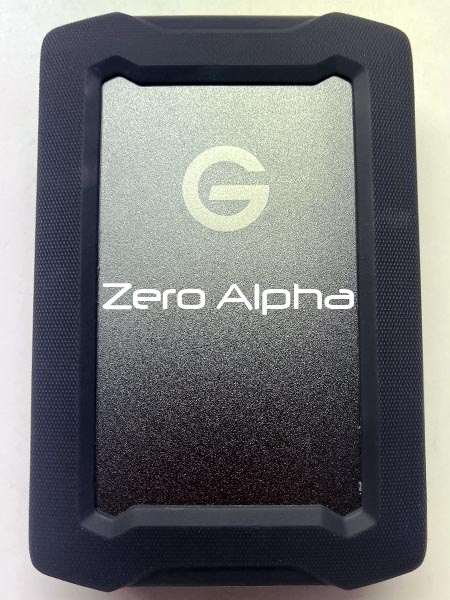SanDisk Professional G-DRIVE ArmorATD Data Recovery
SanDisk Professional G-DRIVE ArmorATD data recovery service by Zero Alpha. Below are the common problems associated with the G-DRIVE ArmorATD that may necessitate data recovery.

1. Physical Damage
Even with its rugged exterior, the ArmorATD can suffer from physical damage under certain conditions:
- Impact Damage: A significant drop or impact may damage the internal hard drive, leading to read/write errors or complete drive failure.
- Water Damage: While the drive is water-resistant, prolonged exposure to liquids can seep through, corroding internal components.
- Dust or Dirt Ingress: Extreme environments can cause debris to enter the drive, potentially causing mechanical failures.
2. Mechanical Failures
The G-DRIVE ArmorATD houses a traditional spinning hard drive, which is susceptible to mechanical issues:
- Head Crashes: Sudden impacts during operation can cause the read/write head to crash into the platters, leading to data loss.
- Motor Failures: Over time, the motor that spins the drive platters may fail, making the drive unreadable.
- Wear and Tear: Extensive use can degrade internal components, leading to slow performance or failure.
3. Logical Issues
Logical problems can occur due to software errors or improper handling:
- File System Corruption: Sudden disconnections, power outages during transfers, or malware can corrupt the drive's file system, making data inaccessible.
- Partition Loss: Accidental reformatting or partitioning errors can wipe out entire volumes of data.
- Accidental Deletion: Files or folders may be mistakenly deleted, leading to the need for recovery.
4. Connection Problems
The ArmorATD relies on its USB-C or USB-A connection for data transfer. Common connection-related issues include:
- Cable Damage: A faulty or damaged cable can interrupt data transfer, potentially causing corruption or failure to recognize the drive.
- Port Issues: Frequent use in harsh conditions can lead to damage or wear on the USB port, preventing the drive from being detected.
- Compatibility Problems: Using the drive with unsupported devices or operating systems can lead to recognition issues.
5. Electrical Failures
Electrical problems can render the drive inaccessible:
- Power Surges: Voltage spikes can damage the drive's circuitry, causing permanent failures.
- Overheating: Extended use or operation in high-temperature environments can overheat the drive, damaging internal components.
6. Firmware Issues
The G-DRIVE ArmorATD’s firmware plays a critical role in its operation. Problems can arise if:
- Firmware Becomes Corrupt: A corrupted firmware can prevent the drive from functioning properly.
- Updates Fail: Attempting to update the firmware without following proper procedures can brick the drive.
7. Bad Sectors
As with any traditional hard drive, bad sectors can develop over time:
- Data Corruption: Files stored in affected areas may become unreadable.
- Drive Slowdowns: A large number of bad sectors can severely impact performance, causing delays or crashes during data access.
8. Sudden Drive Failure
Despite its rugged design, the ArmorATD can fail without warning. Common symptoms include:
- Unrecognized Drive: The drive no longer appears in the file explorer or disk management tools.
- Clicking or Grinding Noises: These sounds often indicate internal mechanical damage.
- Frequent Freezing or Crashes: The drive may cause the connected system to hang or crash during use.